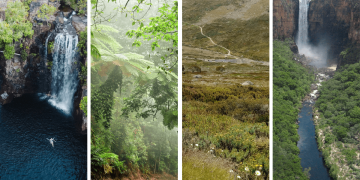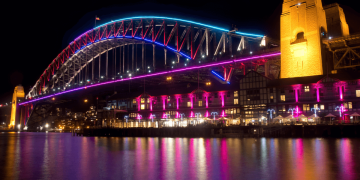The Great Barrier Reef and Climate Change

With its vivid hues, varied aquatic life, and sheer natural majesty, Australia’s most famous natural marvel, the Great Barrier Reef, has long dazzled the globe. This UNESCO World Heritage site, stretching over 2,300 kilometers along the Queensland coast, is not only a national treasure but also a worldwide environmental bellwether. Climate change poses an existential threat to the reef, making it one of the most urgent environmental concerns today.
Citing the dreadful effects of rising sea temperatures, ocean acidification, and catastrophic storm events, scientists, environmentalists, and locals have sounded the alert on the diminishing health of the reef in recent years. This essay looks at how climate change is altering marine habitats, the Great Barrier Reef, and what is being done to protect this natural wonder.
A Living Giant at Risk
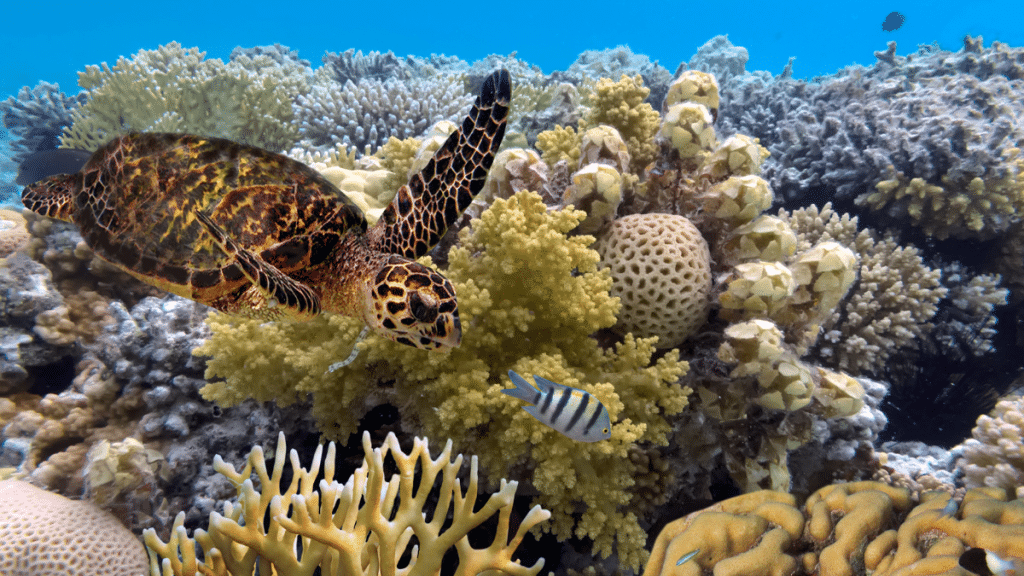
There are about 3,000 reefs and 900 islands that make up the Great Barrier Reef, which is the world’s biggest coral reef system. It is home to over 1,500 kinds of fish, 400 kinds of coral, and many other sea creatures. It also brings about $6.4 billion a year into the Australian economy through fishing, tourism, and study.
But this underwater wonder is in trouble below the surface.
The Australian Institute of Marine Science says that the reef has been through six mass bleaching events since 1998. Four of these events happened between 2016 and 2022. Because of climate change, the oceans are getting warmer, which has caused these events. They have badly damaged or killed large areas of coral.
What is Coral Bleaching?
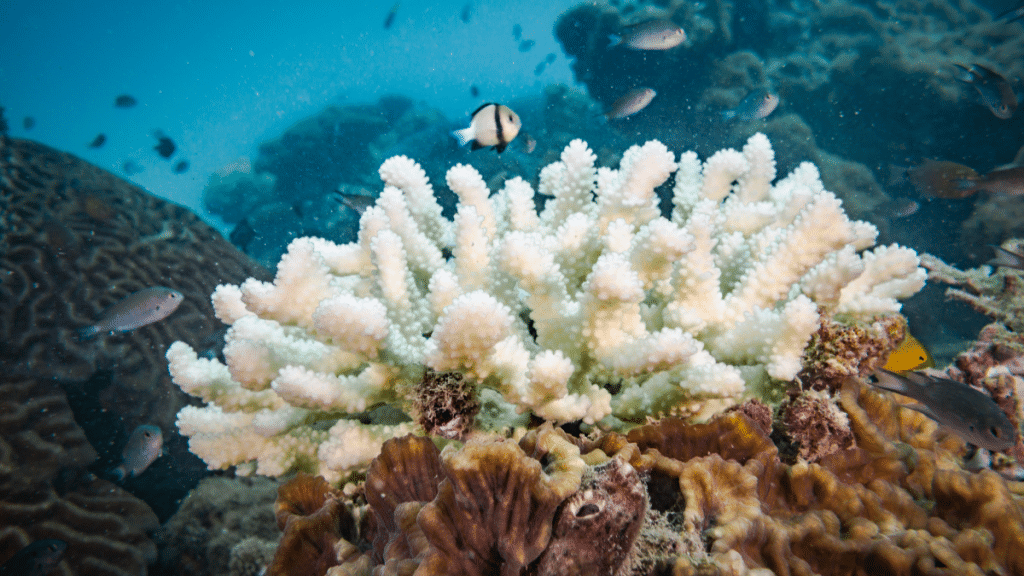
Understanding the problem depends on knowing what coral bleaching really is. Living inside their tissues and using photosynthesis to produce nutrients, coral have a symbiotic connection with microscopic algae known as zooxanthellae. Coral hue and energy come from this link.
Bleaching, the phenomena whereby corals become stressed and release the algae, results from water temperatures rising above acceptable limits turning ghostly white. Should temperatures not drop fast enough, the corals might starve and perish.
Widespread bleaching of the Great Barrier Reef has already occurred; with every new incident, its capacity for recovery is getting less.
Rising Sea Temperatures: A Slow Burn
The main cause of coral bleaching is the increase in sea surface temperatures brought about by atmospheric greenhouse gas accumulation. Corals can be stressed even by just one degree Celsius above usual.
Over 99% of coral reefs globally might be lost if global temperatures climb by 2°C over pre-industrial levels, according warnings issued by the Intergovernmental Panel on Climate Change (IPCC). With present paths, this dark prediction is approaching reality more and more.
Ocean heat waves have become increasingly frequent, strong, and lengthy in Australia, so providing unfriendly conditions for coral reefs.
Ocean Acidification: The Silent Killer
While rising temperatures often grab the headlines, ocean acidification is an equally insidious threat. The ocean absorbs about 30% of the carbon dioxide (CO₂) released into the atmosphere. This process alters the ocean’s chemistry, making it more acidic.
Acidic waters reduce the availability of calcium carbonate, a compound essential for corals and other marine organisms to build their skeletons and shells. As acidification intensifies, corals become weaker, grow slower, and are more susceptible to disease and erosion.
The Great Barrier Reef is already showing signs of reduced calcification rates, with many coral species growing more slowly than they did a few decades ago.
Impact on Marine Life

The complex network of aquatic life dependent on coral reefs suffers alongside them. For their richness, coral reefs are sometimes referred to as the “rainforests of the sea.” Fish numbers drop, nesting sites disappear, and predator-prey interactions are upset when reefs erode.
This influences nearby fisheries, therefore endangering coastal towns’ livelihoods and food supply. Particularly susceptible species are those like the clownfish, which find refuge in particular kinds of coral.
Furthermore threatened from habitat loss and shifting ocean dynamics are big marine species include green sea turtles, dugongs, and reef sharks that either live on or depend on the reef.
Economic and Cultural Impacts
The state of the Great Barrier Reef affects much more than the ecology. Attracting over two million people every year, it is pillar of Australia’s travel business. Already, mass coral bleaching incidents have reduced tourism in impacted areas.
The reef is very important to many Indigenous people both spiritually and culturally. Degradation of this natural location also results in a loss of legacy and traditional knowledge handed down over the years.
Restoration and Resilience Efforts
Despite the dire situation, hope is not lost. Australia has invested in several programs aimed at reef restoration and adaptation.
1. The Reef 2050 Plan
The Reef 2050 Long-Term Sustainability Plan outlines actions to improve water quality, reduce coastal pollution, and support coral restoration projects. It’s backed by significant federal and state government funding and is updated regularly to align with new scientific findings.
2. Coral Nurseries and Assisted Evolution
Marine biologists are experimenting with coral nurseries where fragments of healthy coral are grown and later transplanted to damaged reefs. There are also efforts to breed heat-tolerant corals through selective breeding and genetic research.
3. Water Quality Management
Improving water quality by reducing agricultural runoff, pesticides, and sediments entering the reef is another crucial strategy. Nutrient-rich runoff can cause algal blooms that smother corals and block sunlight.
What Needs to Change?
While local interventions are vital, scientists agree that the most crucial action is reducing global carbon emissions. The reef’s survival depends on limiting global warming to below 1.5°C, a goal set under the Paris Agreement.
This requires coordinated global efforts, including:
- Shifting to renewable energy sources
- Reducing dependence on fossil fuels
- Protecting and expanding marine protected areas
- Enforcing stricter emissions policies
- Supporting climate-resilient communities
Australia, as the steward of the Great Barrier Reef, plays a pivotal role in global climate negotiations and must lead by example.
Youth and Community Involvement
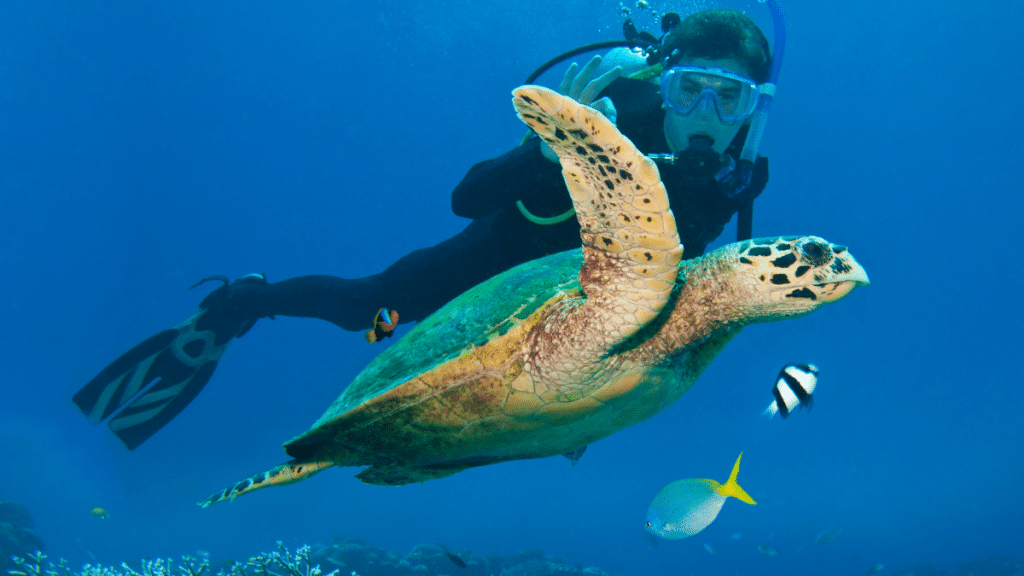
Involvement of young Australians and grassroots groups is one of the most motivating features of reef preservation. From school projects and climate marches to citizen science events like Eye on the Reef, community level awareness and action is rising.
Local tourism companies have also started to be champions, including sustainability into their operations and teaching guests reef-safe methods.
Global Attention and Accountability
The reef still commands the worldwide attention. Due of its diminishing state, UNESCO has discussed whether to add the Great Barrier Reef to the “World Heritage in Danger” list recently. The message is clear: immediate action is required even though it has thus far evaded this categorization.
While worldwide media coverage has made the Great Barrier Reef a potent emblem of the climate problem, environmental groups such as WWF Australia and the Great Barrier Reef Foundation keep advocating for more robust protections.
The Clock is Ticking
The Great Barrier Reef’s fate is not set in stone, but time is running out. It makes a difference for every degree of heat that is stopped, every tonne of CO2 that is not released, and every law that is passed to protect the reef.
This isn’t just an environmental problem; it’s also a test of our joint resolve, a cultural duty, and a national duty. We would lose more than just coral if we lost the reef. We would also lose a live symbol of Australia’s natural history.
Final Thoughts

The Great Barrier Reef has been there for a very long time. It has been through ice ages, storms, and changes in sea level. However, the biggest problem it faces now is caused by people.
The effects of climate change are not just ideas; they can be seen and felt in the bleached corals, the animals that have been forced to move, and the worried words of people living along the coast. It’s not tomorrow or next year that will decide what will happen to the reef. It’s now.
Let’s make big choices, live in a way that doesn’t harm the environment, and take responsibility as a group. To protect the reef is to protect a part of Australia’s soul.

